"Plastic plane": Overview of the world's first Bombardier CS 300
Bombardier CS 300 is a completely new medium-haul narrow-body aircraft. It is designed to challenge the Airbus 320 and Boeing 737.
Bombardier CS 300 Photo: Alexander Lanetsky
Latvian airBaltic has become the first airline to receive a Bombardier CS 300 for commercial operation. On December 01, she officially presented the new aircraft. CFTS correspondents attended the presentation and shared what they saw.
Unlike its competitors, the CS 300 is not an update of a previously successful model, but a completely new aircraft. For a significant number of composites in the design, it has already been nicknamed the "plastic plane". Widespread use of composites - from interior and toilets to structural elements. Landing gear wings, wing, non-power panels of the fuselage are made of composite materials. Rivets are visible only in the area of the center section.
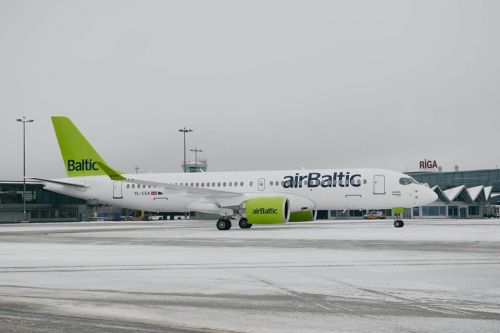
The Canadian plane should be a breakthrough in reducing airline costs. So Bombardier claims that the new Pratt & Whitney PurePower PW1500G engine, as well as specially shaped wings, provides up to 20% fuel savings compared to current competitors (Airbus 320ceo and Boeing 737NG). The huge diameter of the new revolutionary motors is noticeable due to the increased size of the fan. This design of engines using a gearbox between the fan shaft and the low-pressure turbine saves a significant amount of fuel. The design of the engine is truly revolutionary - it is a hybrid between a turboprop and a jet engine.
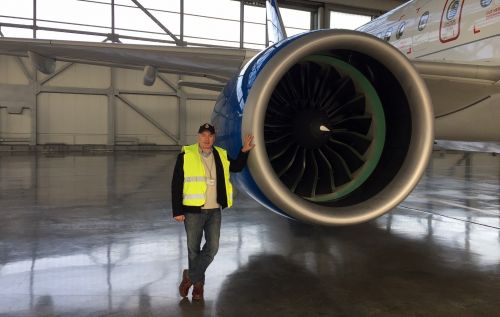
In addition, the CS 300 is almost 8 tons lighter than the Boeing 737-7MAX and 6 tons lighter than the Airbus 319neo. This, combined with other innovations, helps the Canadian aircraft achieve up to 12% savings in operating costs compared to the latest generation of competitors and 15% with current models on the market.
In addition, Canadians are actually revolutionizing the aircraft maintenance market. The overhaul life of CS 300 for basic maintenance is 8500 hours, and for operational (linear) - 850 hours between A checks - many times longer than that of currently flying equipment.
There are six monitors in the cockpit instead of the traditional eight. Management is carried out by the handle (joystick), and not by the steering wheel. There is a minimum of switches and moving mechanical parts - system control from monitor screens.
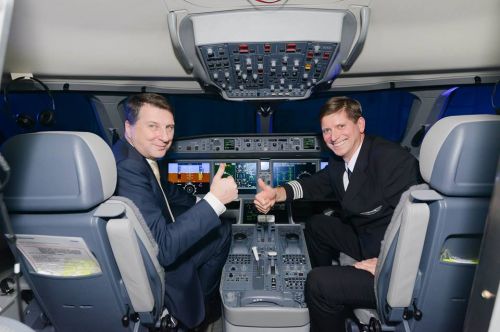
On the fuselage, there is a noticeable absence of protruding parts - landing lights, and the number of antennas, various fairings and other things is minimized - reducing drag, saving fuel.
The cabin of the Canadian aircraft is made very friendly to the passenger and flight personnel. The aircraft received by airBaltic is made in a 2-cabin layout for 145 seats. The business and economy salons, according to the tradition that has already become for continental Europe, are equipped with the same chairs, differing only in pitch - 32 and 30 inches, respectively.
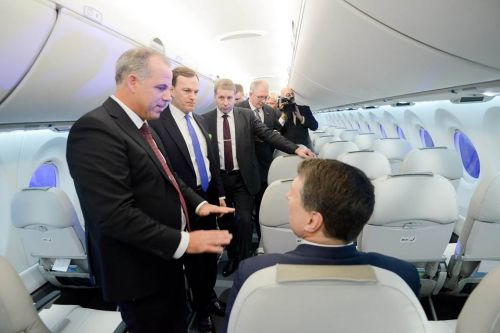
The CS 300 has a wide spacious cabin, the aisle between the seats is wider than that of competitors, which will allow flight attendants with a trolley to pass a passenger in it. The cabin has large windows. Luggage racks are made in accordance with the requirements of modern market conditions - each passenger is provided with space for luggage above the standard (10-kilogram suitcase, dimensions 24 x 17 x 11 inches), and they can be placed on edge. The shelves open lower than those of competitors: firstly, it is easier to put on and take off luggage, and secondly, even a person below average height (from 175 cm) will see if he has forgotten something on it.
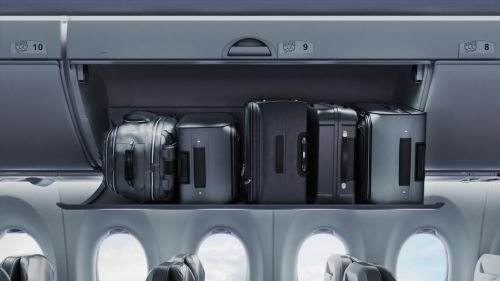
But the new seats are worthy of special mention - they are 19 inches wide, that is, 2.5 cm wider than the Airbas ones and almost 5 cm wider than the Boeing ones. In addition, when the passenger reclines the seat back, the lower part of the seat moves forward by about 0.5-1 cm, increasing the angle of the seat.
The CS 300 has a convenient compact kitchen that allows you to heat food for almost all passengers at the same time. At the same time, Canadian manufacturers have tried to ensure the safety of passengers and flight attendants as much as possible. So, the carts are located in the kitchen in such a way that they physically cannot roll away on their own. Boilers and stoves will not turn on unless filled and closed properly. Much more spacious and toilet in the new aircraft.
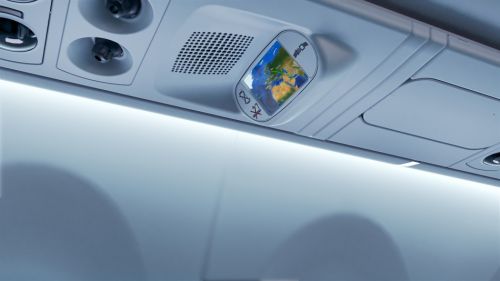
In total, the airline has ordered 20 CS 300s, with the second scheduled for Christmas and two more early next year. The Latvian airline hopes to receive all aircraft by the end of 2018. They will gradually replace the current narrow-body fleet of the company: Boeing 737 300 and Boeing 500. Initially, the Latvians planned to abandon the Boeing 737 by 2018, but due to delays in the delivery of the Canadian aircraft, as well as some revision of the flight development strategy, it was decided not to rush into their return until at least 2020.
The CS 300, unlike the classic Boeing 737 currently operated by airBaltic, can fly up to 6000 km, which will allow flying from Riga to any point in Europe, the Canary Islands, Abu Dhabi.

(Photos by A. Lanetsky and airBaltic are used).
